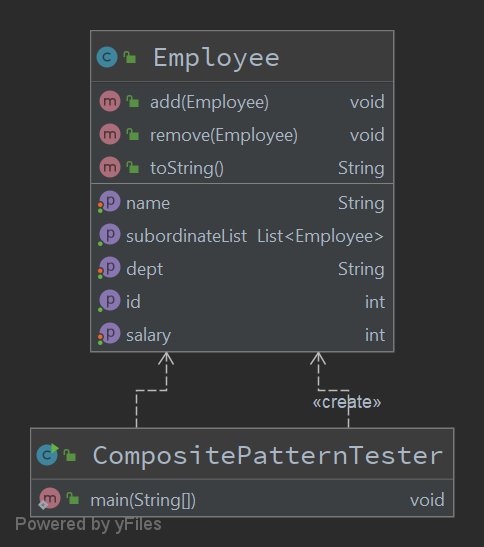Composite Pattern in Design Pattern
组合模式
Overview
组合模式(Composite Pattern),又叫部分整体模式,是用于把一组相似的对象当作一个单一的对象。
组合模式依据树形结构来组合对象,用来表示部分以及整体层次。
这种类型的设计模式属于结构型模式,它创建了对象组的树形结构。
这种模式创建了一个包含自己对象组的类。该类提供了修改相同对象组的方式。
主要解决
它在我们树型结构的问题中,模糊了简单元素和复杂元素的概念,客户程序可以像处理简单元素一样来处理复杂元素,从而使得客户程序与复杂元素的内部结构解耦。
何时使用
- 您想表示对象的部分-整体层次结构(树形结构)
- 您希望用户忽略组合对象与单个对象的不同,用户将统一地使用组合结构中的所有对象
应用实例
- 算术表达式包括操作数、操作符和另一个操作数,其中,另一个操作符也可以是操作数、操作符和另一个操作数
优点
- 高层模块调用简单
- 节点自由增加
实现

Employee
1 | package individual.cy.learn.pattern.structural.composite; |
Tester
1 | package individual.cy.learn.pattern.structural.composite; |
1 | ceo = Employee{id=10000, name='Adam', dept='CEO', salary=70000} |